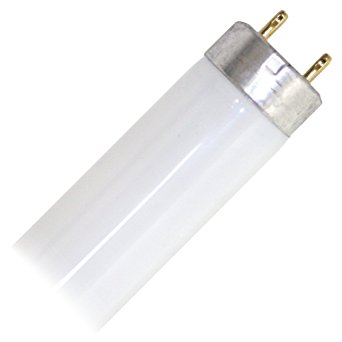The National Motor Freight Traffic Association’s Commodity Classification Standards Board (NMFTA’s CCSB) is holding a September 12 hearing on a proposal to amend the National Motor Freight Classification (NMFC) provision that applies to fluorescent tube lamps. The NMFC is a scheme used by the motor carrier industry to classify freight by value, cube and density, for less-than-truckload (LTL) shipments. It typically dictates how much we pay to ship material.
In summary, the proposal appears to:
- Increase the classification of fluorescent lamps from the current “100” to “175”, due to “handling, stowing and liability concerns… with the transportability of these commodities”
- Amend the scope of the classification to clearly include compact fluorescent lamps (CFLs)
The NMFTA/CCSB staff analysis includes the proposal and the citation that several LTL carriers have trouble transporting these products without exposing themselves to damage claims.
The National Electrical Manufacturers Association (NEMA) expects the upshot of the proposal to be increased LTL shipment rates for fluorescent lamps. Additionally, LEDVANCE (Sylvania) has already submitted comments stating that they’ve run analyses showing their cost to ship these lamps would double under reclassification.
Ed Orlet, the National Association of Electrical Distributors (NAED) Senior Vice President of Membership and Marketing, sent Joel Ringer, the Chairman of the Commodity Classification Standards Board, the following letter in behalf of the association:
Chairman Ringer,
The National Association of Electrical Distributors (NAED) is responding to the letter dated August 10 notifying of the September 12 Commodity Classification Standards Board (CCSB) public meeting for consideration of a proposal regarding fluorescent lamps.
Founded in 1908, NAED represents 467 electrical distribution firms operating nearly 6,000 locations across the United States and employing approximately 200,000 people. Our industry generates an estimated $173 billion in annual revenue. As the trade association representing U.S. distributors of lighting and lighting equipment, NAED:
- requests to become a Party of Record on this matter;
- requests to participate in the September 12 meeting by phone as in-person participation is not possible; and
- provides these comments in opposition to the docketed proposal
NAED urges rejection of the proposal to reclassify fluorescent lamps from 100 to 175. The analysis of the proposal does not show any change in the current state, which has served the industry since 1952, showing evidence that fluorescent lamps are more fragile or that existing labelling and handling instructions have led to higher incidences of breakage.
On the matter of density, NAED echoes comments submitted by our industry manufacturers’ association, NEMA, regarding the proposed classification increase to 125. As NEMA rightly points out, “the average density of 7.68 pcf computed from the published shipment data. The spreadsheet shows only ten (10) of the 10,871 total lines (0.092 percent) were provided by “Carrier”. Records indicate that this item was not covered by a noticed CCSB Classification Research Project. Moreover, neither NEMA nor its member manufacturers were contacted by CCSB to solicit shipper data.”
On the issue of handling, CCSB’s analysis refers to statements by “several carriers” stating that “these commodities are a source of damage claims” as evidence to indicate a need for change in classification. However, no evidence of increasing number of claims is cited and the CCSB’s own policies explicitly state that economic considerations are not to be considered in classification changes.
The analysis also points to statements from carriers regarding the management of broken fluorescent lamps as hazardous waste. The U.S. Environmental Protection Agency’s Universal Waste Rule (UWR), does not consider broken lamps to be hazardous waste.
Significant changes such as these being considered by the CCSB must be supported by data-based arguments. The CCSB’s analysis does not offer compelling data indicating the need for a change to these long standing classifications. For that reason, NAED strongly urges the CCSB to reject reclassification of fluorescent lamps.
We trust you will carefully consider our comments and that the outcome will be fair to all interested parties. Thank you again for asking for our participation.
Sincerely,
Edward M. Orlet
Senior Vice President for Membership and Marketing
National Association of Electrical Distributors
Tagged with fluorescent lamps, lightED
Good reading